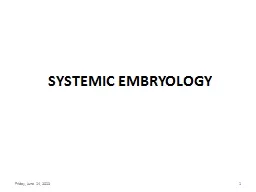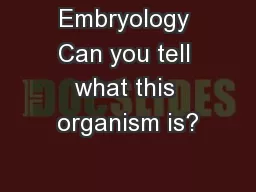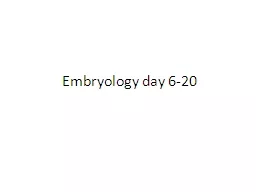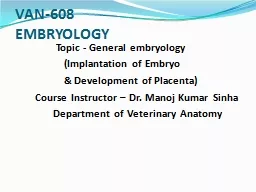PPT-SYSTEMIC EMBRYOLOGY Friday, June 14, 2013
Author : lois-ondreau | Published Date : 2020-04-03
1 Muskuloskeletal Development Towards the end of the fourth week the limbs begin to develop from limb buds made up of mesenchyme somatic mesoderm covered with
Presentation Embed Code
Download Presentation
Download Presentation The PPT/PDF document " SYSTEMIC EMBRYOLOGY Friday, June 14, 20..." is the property of its rightful owner. Permission is granted to download and print the materials on this website for personal, non-commercial use only, and to display it on your personal computer provided you do not modify the materials and that you retain all copyright notices contained in the materials. By downloading content from our website, you accept the terms of this agreement.
SYSTEMIC EMBRYOLOGY Friday, June 14, 2013: Transcript
Download Rules Of Document
" SYSTEMIC EMBRYOLOGY Friday, June 14, 2013"The content belongs to its owner. You may download and print it for personal use, without modification, and keep all copyright notices. By downloading, you agree to these terms.
Related Documents


![Embryology Bill [HL] as brought from the House of Lords on 5th Februar](https://thumbs.docslides.com/348513/embryology-bill-hl-as-brought-from-the-house-of-lords-on-5.jpg)











